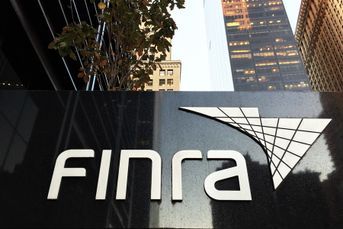SigFig raises another $50 million in venture capital

With successful partnerships with big names like Wells Fargo and UBS, why is the robo still raising money?
SigFig, a financial technology vendor that builds digital advice products for financial institutions, closed another round of venture capital funding, attracting $50 million.
The company has now raised a total of $117 million. While that is only half of what robos like Betterment and Wealthfront have raised, SigFig’s pivot towards partnering with large institutions was supposed to avoid the high client-acquisition costs that reportedly plague the direct-to-consumer business model.
“That strategy puts us in a good position to reach a much larger audience, which is a big part of why we have chosen large enterprises,” Mike Sha, SigFig CEO, told InvestmentNews in May 2016 after closing a $40 million round of funding.
Now the company says its partnerships with Wells Fargo Advisors, UBS Wealth Management and Citizens Bank represents more than 70 million customers. If that’s the case, why keep raising venture capital?
Will Trout, the head of the wealth management research at Celent, said SigFig might have already burned through a lot of the capital it’s raised in order to meet the sophisticated demands of the banks.
(More: It may be too early to write off robo start-ups)
“It’s very hard to pivot a direct-to-consumer [company] to a business-to-business,” Mr. Trout said. “You have great functionality up front. The trick is to integrate it into the back end systems of the bank or wealth manager.”
“They’ve had to do a ton of customization, and it’s a huge amount of spend,” he added.
That isn’t necessarily a knock on SigFig. Few financial services firms of any size have their data in order, and tech vendors have to do their best to plug into outdated legacy systems, Mr. Trout said. The increased complexity of a client like Wells Fargo could have required more resources than SigFig initially planned for, he said.
There also is increased competition from other fintech vendors, as well as financial institutions deciding to spend the same money to design digital products in-house.
“That’s a really, really tough play,” said Mr. Trout. “The holy grail is integrated wealth management with banking, trust and brokerage. SigFig, they’ve got a lot of work to do.”
David Goldstone, research analyst with The Robo Report, said robo advising has become very competitive for both B2B and B2C players, and it’s common for a growth stage company like SigFig to seek rapid expansion in the marketplace and to raise additional capital.
“Rapid expansion and investments in product developments to stay at the forefront of technology are valid reasons to raise capital,” he said. “If this round was completed at a higher valuation than last round it also implies that investors still believe in the value and future of the company.”
Mr. Sha also dismissed the idea that increased VC funding was any sort indication on his company’s ability to make money. While not providing any specific numbers on revenue or accounts, he said the firm leading the investment round, General Atlantic, is a firm that tends to invest in “much later-stage companies.”
Existing investors including Bain Capital Ventures, DCM Ventures, Eaton Vance, New York Life, Nyca Partners, UBS, and Union Square Ventures also participated in the investment.
(More: Revisiting 10 fintech acquisitions, and how they changed the industry)
“It’s hard to attract the interest of good growth stage investors unless your business is working,” Mr. Sha said.
The latest round of funding is meant to aggressively expand the types of technology it can offer institutional partners beyond robo-advice, he said. He would like SigFig to provide the technology that bank employees and advisers use in-house, and expand into longer-term financial planning and retirement.
He also wants to partner with banks outside of the U.S.
Instead of client acquisition, Mr. Sha said all of the investment will go towards engineers and product managers.
“We want to be independent and be around for the long-term,” he said. “We could go slow and grow slower and attack opportunities more slowly, but the timing is good for us.”
Mr. Sha said he hopes to eventually take SigFig public.
Learn more about reprints and licensing for this article.








